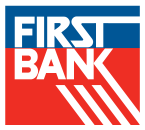To brand or not to brand; it’s a very good question. No, we’re not discussing a soliloquy from Shakespeare, but an important decision that family businesses must make when strategizing for the future. Being the economic powerhouse they are, it makes good financial sense that family businesses wouldn’t leave something as critical as their business branding to chance.
For some, shouting their family ownership heritage from the rooftops simply makes good business sense; however, for others, there’s great hesitation in actively promoting their family business origin and story. Why are there such opposing viewpoints on the subject? Are there advantages to branding a business as a family business? Yes, absolutely. Are there misconceptions about family businesses that may prevent family business enterprises from positioning themselves as one? Yes, unfortunately.
From being perceived as a small, “mom and pop shop” to not wanting to put their family’s privacy at risk, family businesses may choose to not brand themselves as the family business they are. To add to this, there may be the fear of retribution from potential imperfections or past mistakes of associated family members involved or not involved in the family enterprise.
Although it’s a personal decision on the part of the family and family business owner – and every family and family business dynamic is unique – there are advantages to family business branding that are simply not afforded to their publicly-traded counterparts. Family business owners should consider the benefits of maximizing their unique origin, story, and brand.
Before delving heavily into the advantages, however, one must first consider the term “branding” as it applies to all businesses, including privately-held and publicly-traded entities. Merriam-Webster defines branding as “the promoting of a product or service by identifying it with a particular brand”. Thanks to 24/7 online and social media platforms, most consumers today can promptly cite their favorite household brands and names. To take it one step further, arguably many next generation consumers can also just as quickly name what their favorite brands stand for and support.
Branding and brand strategies are on the minds of family business owners. When respondents to the First Bank Center for Family-Owned Businesses’ 2023 Survey1 were asked about the business' top priorities of today, “Marketing & Communication Strategies” and “Brand Awareness & Perception” both ranked in the top four; #2 and #4, respectively.
It’s no wonder this is ranked with such high importance. When it comes to building a client base, branding and brand identity can mean the difference between securing a life-long customer or sacrificing the relationship forever. However, in today’s economic environment, branding is more than just the name on a sign or colors on a logo, it’s how an organization conducts business, treats its employees and customers, supports the community, and is seen in the public’s eye.
Kelly O’Malley, principal, O’Malley Hansen Communications, has provided marketing counsel to family-owned businesses for more than three decades. She encourages these businesses to take advantage by focusing on the tangible benefits of their family-owned structure because highlighting these attributes builds strong loyalty with all stakeholders.
A majority of consumers want to buy or do business with a brand they feel they can trust and will put the customer first. If a customer feels they can’t trust an organization, he or she won’t hesitate to seek out a competitor that can. A study conducted by OnePoll on behalf of CG Roxane, indicated that of the 2,000 adults surveyed, 67% trusted local businesses and 64% trusted family-owned businesses².
One such reputable business is the multi-generational family business, In-N-Out Burger®. Founded by Harry and Esther Snyder in 1948 in Baldwin Park, California, In-N-Out is still owned and operated by the Snyder family. Leading In-N-Out Burger into the next decade, Lynsi Snyder, Owner and President of In-N-Out Burger and third generation family business owner, said, “It’s important to me that every decision I make regarding In-N-Out Burger honors my family’s legacy. We are really more than a family business—we are a family here at In-N-Out Burger.”
Proudly branded as a family-owned business and as the first restaurant in the state of California to offer a drive-through option, In-N-Out Burger is seen by the public as a Christian-based organization that not only maintains consistency in the quality of their products but also treats its employees with respect.
“My grandparents, Harry and Esther Snyder, founded In-N-Out Burger 75 years ago on the simple idea of having our Associates use the freshest, highest-quality ingredients and produce the best burger in the world, served with a smile. We don’t cut corners. We dice our potatoes fresh for every customer and never compromise. We take care of our customers, and we take care of our In-N-Out Associates.”
Talent acquisition and retention
Family-owned enterprises have historically enjoyed longer employee retention and higher employee satisfaction scores, even amidst the “Great Resignation,” or the period during the pandemic and post-pandemic where employers were anxiously trying to retain their employee base. For family-owned businesses, however, this workforce movement did not have the impact that it did on its counterparts. Not only have family businesses found themselves enjoying top-tier talent retention, but they’re also well-positioned to attract the next generation of sought-after employees.
According to O’Malley, this bond is built with employees first and then extends throughout the business. “Anecdotally, I’ve had hundreds of conversations with employees at all types of companies and the ones who talk from their heart, who put their blood, sweat and tears into their jobs and stay longer than their counterparts are the teams who support family-owned businesses,” said O’Malley. “What business isn’t working to build that type of allegiance every day?”
Lisette Gaviña Lopez, 4th generation family member and Chairman of the Board for Gaviña Coffee Company®, a multi-generational, family-owned business in Vernon, CA, commented on the loyalty and commitment of their team members.
“Our culture as a family business is felt and appreciated by our team members and vendors, too. We are honest and committed to our business and the families that our business supports, and this is reflected in our low attrition rates and high incidence of multi-generational employees.”
A 2021 study by Great Place to Work³ found that fair pay, personal meaning, and organizational equity are the most sought-after workplace benefits for Millennials (anyone born between 1981 and 1996). These traits are not only important for Millennial employees, but they’re equally important for next-generation employers as well. Findings from The First Bank Center for Family-Owned Businesses’ 2023 Family Business Survey align with this public image of family businesses: “Employee Engagement and Satisfaction” is a higher priority among next-generation family business leaders (30%) than it is among the first generation (20%) of survey respondents. This means that family business leaders poised to assume leadership of the next generation of family businesses are aligning with the values of the next generation workforce.
Snyder commented that in exchange for delivering high-quality customer service, their family business cares for their employees with competitive salaries and wages. “We provide a culture that is encouraging, edifying, and fun.” Family businesses are evolving and tailoring their cultures to continue attracting and retaining top talent.
Community engagement
As an integral part of the communities in which they operate, family businesses are deeply-ingrained in their communities. Many consumers want to support local businesses as well as family-owned, wherever possible. It’s no accident that family-owned businesses are often seen advertising in local school programs, supporting community causes, providing academic scholarships to area students, and participating in county parades.
Throughout American history, family businesses have been active, socially-responsible members of their community. As younger generations get involved in causes they’re passionate about, social responsibility and community engagement will continue to play a major role in how family businesses operate.
O’Malley emphasizes the importance of repeatedly showcasing the inherent benefits of family-owned organizations by telling the company’s story repeatedly in concise, consistent, and compelling language to engage multiple audiences, including customers, business partners, board members, investors, and the communities where they do business.
This unique brand positioning can help family businesses continue to attract a loyal client base. Since family businesses make up approximately 90% of businesses and 64% of the U.S. gross domestic product4, one can infer that customers love and support their favorite family businesses.
Not only are family businesses highly-perceived by American consumers, they’re also viewed as being trustworthy, reliable, and deep-rooted. Achieving long-standing roots in the communities in which they serve, many family-owned enterprises are viewed by the public as more credible than their publicly-traded counterparts.
Gaviña Lopez added, “As a family business, we are involved in our community from where the coffee is grown to where the product is made and to where consumers enjoy our coffee (from seed to cup) and we understand the importance of giving back to our community.”
“Family-owned businesses have a distinct competitive advantage because they represent valuable qualities such as trust, stability, customer focus, and authenticity,” said O’Malley. Consumers often perceive family-owned businesses as having more stability and longer-term perspectives than their publicly-held counterparts. Why wouldn’t a family business capitalize on this differentiator?
Customer-centric culture
Enduring relationships are often built between family businesses and their customers. The First Bank Center for Family-Owned Businesses’ 2023 Family Business Survey found that “Understanding Customer Wants and Needs” (52%) is the overall top priority for family businesses today. In addition, building a customer-centric culture is top-of-mind for over half of family business leader respondents.
At a family business, like In-N-Out Burger, “Our customers are our number one asset, and we serve them with a smile. They expect quality and freshness in everything we do,” Snyder said.
When strategizing for the future, differentiation in the marketplace is the key to longevity. To brand or not to brand by capitalizing on the heritage of the family business is a question many leaders ask themselves. There’s empirical evidence to support branding as a family business to help the organization achieve its short and long-term goals.
“People like to do business with well-run family businesses,” commented O’Malley, “because their very nature builds a more personal relationship.”
Could branding as a family-owned business be another ingredient in “the secret sauce” that helps to set family businesses apart? Choosing whether to brand or not to brand, that’s the easy part. Deciding if family business branding specifically is right for your unique organization and family, well, that’s a question only you can answer.
To learn more about the First Bank Center for Family-Owned Businesses, our free offerings for family businesses, or to engage in a conversation about best practices for branding your family business, contact us.
2 www.crystalgeyserplease.com
3 “Top 5 Things Millennials Want In the Workplace in 2021”, Great Place to Work, 2021
4 www.familybusinesscenter.com/resources





